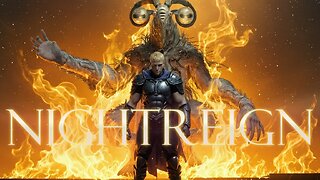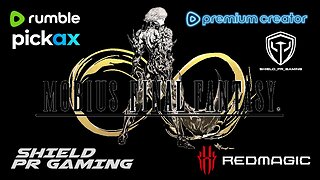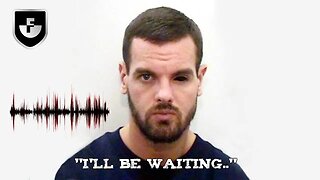Premium Only Content

A Volatility Strategy Using ATR Bands (+Backtest)
Here you can find the strategy:
https://www.quantifiedstrategies.com/single-strategies-order/#Strategy_1_Swing_Trade_NasdaqS_P_500_volatility_bands
In this video, we'll be discussing an incredible volatility strategy that's been around for almost a decade and is still going strong - the ATR bands strategy. This strategy works well with various ETFs and futures contracts, and we'll be showing you how it performs and which indexes it works best on.
Historically, this strategy has performed exceptionally well on Nasdaq 100, and we'll be starting by taking a closer look at how it's performed on this index. The backtests equity curve for this strategy has a steady upward slope without any major setbacks, and the drawdowns have been moderate. The maximum drawdown occurred during the financial crisis in 2008, where it was down 18% at the most. Avoiding drawdowns is essential to reduce the likelihood of selling into a panic.
Despite only trading an average of 8 times per year, this strategy has still managed to beat buy and hold handily with 13% annual returns. This is because a trade typically lasts less than five days, and it's only invested 11% of the time, resulting in a risk-adjusted return of almost 120%. All years except a small loss in 2005 have been positive, and even in bear markets, the strategy performs just as well as in a bull market.
This trading strategy works on other indexes as well. For example, on S&P 500, the average gain is not as good as Nasdaq 100, but the backtest show that it's still impressive with a 1% gain per trade. On XLP, the ETF that tracks consumer staples, the equity curve rises linearly and has only small and short setbacks.
It's essential to keep in mind that slippage and commissions are not included in any of our backtests, but they are minimal with so few trades. If you're interested in learning more about this strategy, we have hundreds of free strategies on our website. However, we only reveal this particular strategy for a moderate fee, as we trade it ourselves and believe it's worth paying for. The strategy has three trading rules for when to buy, including one volatility rule, one price action rule, and one trend filter rule. We use one trading rule for when to sell.
#VolatilityStrategy #volatility #ATRBands #TradingStrategy #StockMarket #ETFs #FuturesContracts #Nasdaq100 #SP500 #XLP #Backtesting #RiskAdjustedReturn #BearMarket #BullMarket #PriceAction #TrendFilter #FreeTradingStrategies #TradingTips
TWITTER
https://bit.ly/Twitter_QS
INSTAGRAM
https://bit.ly/Instagram_QS
NEWSLETTER - QUANTIFIED STRATEGIES
30 000+ Traders read our free newsletter about trading strategies.
Sign up: https://bit.ly/substack_QS
-
 27:03
27:03
The Kevin Trudeau Show Limitless
3 days agoThey're Not Hiding Aliens. They're Hiding This.
62.9K82 -
 22:17
22:17
MetatronGaming
6 days agoI spent 7 days in the 1980s
25.1K8 -
 LIVE
LIVE
FrizzleMcDizzle
3 hours agoGRINDING new NightReign content - COME HANG
68 watching -
 26:02
26:02
Planet 3 Outdoors
28 days ago $1.35 earnedBuilding a Treehouse and Catch & Cook a Giant Fish by the River 🌧️🍳
21.3K5 -
 LIVE
LIVE
Shield_PR_Gaming
4 hours ago12/06/25 | Mobius Final Fantasy Reborn & other games!? Follow me on PickAx (referral in description)
1 watching -
 34:21
34:21
Demons Row
18 hours ago $21.66 earnedJason Momoa Reveals His REAL Life in the REDRUM Motorcycle Club ⚠️🔥
164K30 -
 31:07
31:07
Blackstone Griddles
18 hours agoTop 4 Burgers of the Year | Blackstone Griddles
20.1K7 -
 15:37
15:37
True Crime | Unsolved Cases | Mysterious Stories
2 days ago $0.41 earned5 Disturbing 911 and 999 Calls Made by Killers
4.6K -
 11:32
11:32
Geoff_Tac
19 hours agoIWI Masada 9S Elite
37.8K1 -
 23:17
23:17
marcushouse
5 hours ago $0.59 earnedNearly 3 Starship Launches Every Week!? This New Approval is HUGE 🤯
2.79K8